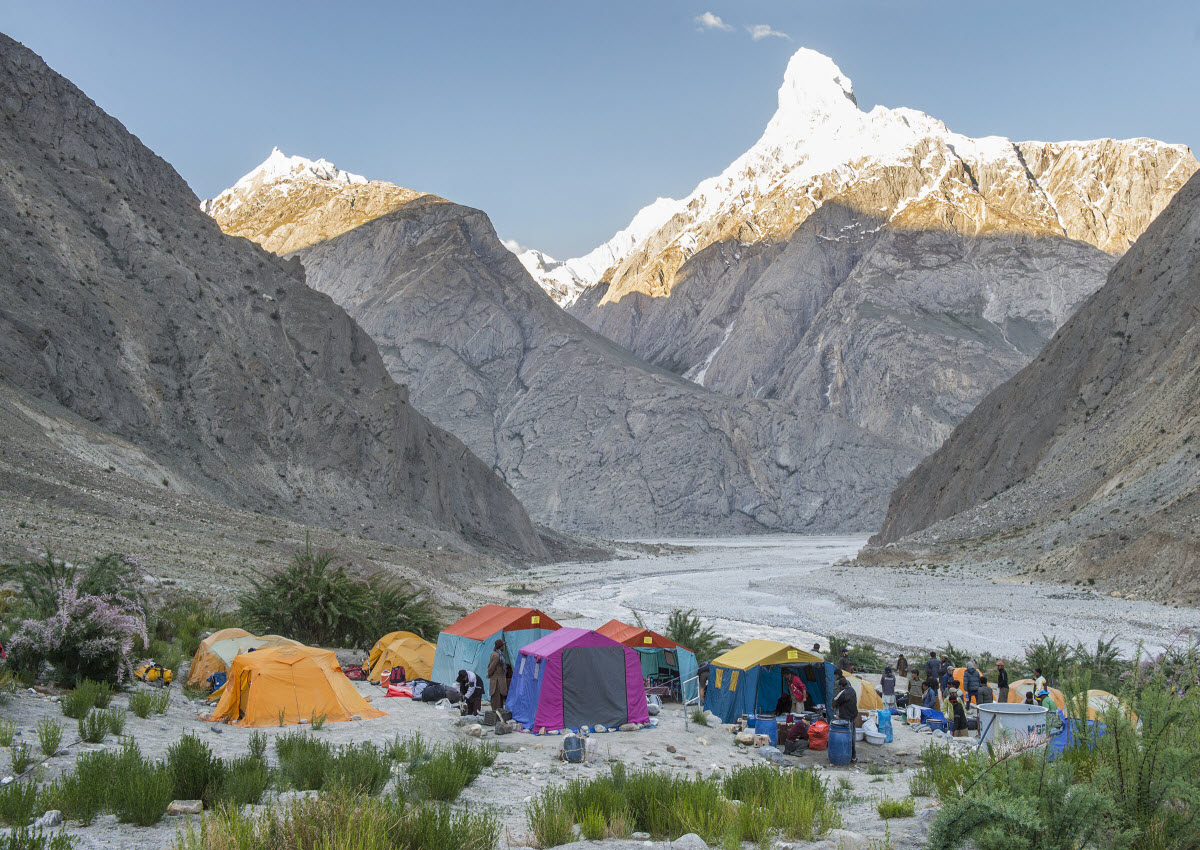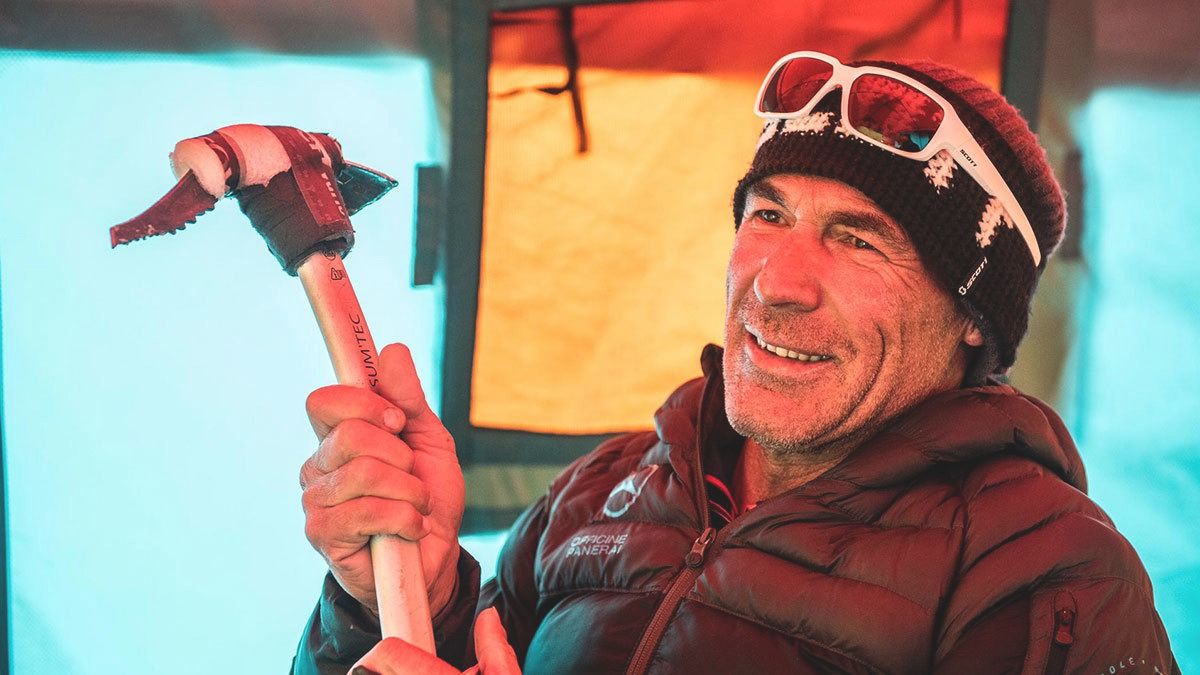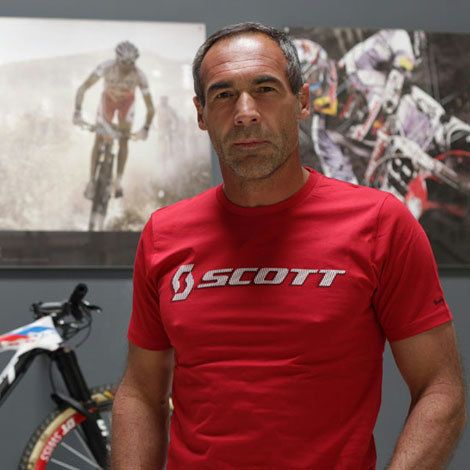MIKE HORN K2 Expedition - Part 1
In May 2015, Mike Horn and his team left Switzerland with the goal of climbing the most difficult summit in the world also known as The Mountain of Mountains, K2.
This travel led them by car across 13 countries and more than 8,000 km to reach the town of Skardu in Pakistan, the entry point of the Central Karakoram National Park where K2 is located.
After 3 months on the expedition, Mike Horn came back to Switzerland, not satisfied, but happy to be healthy and in good condition.
We caught up with him in our headquarters to hear about his crazy adventure.
Mike, you just came back from Pakistan, how are you feeling at the moment?
You know, when you go up into the mountains, you live a little bit in isolation for 3 months and when you come back, it takes a while to adapt.
So first of all, adapting to the lower altitude is not always easy because we lived up at 5000 meters, where every week you lose pretty much one kg of muscle and fat. So now recovering after being up there for 3 months is a period of adaptation.
Secondly, I always feel after an expedition a little bit sad that it’s over because it became a lifestyle. What we do is not only an expedition; it’s a way we live. So when we change the way we live and come back to normal or civilized life, you are sad that it’s finished but at the same time you have to have your next project lined up. You have to be excited about something new. Having been an explorer for 25 years, allows me to come back from an expedition feeling sad that it’s over to being more excited because there’s going to be something new.
Then there is the physical aspect, we pushed hard and we didn’t make it. I feel a little bit disappointed that we didn’t make it as it’s my 3rd attempt on K2.This time, we obviously pushed very hard, we really wanted to get up there but the conditions just didn’t allows us to get to the summit.
So I’m a little bit disappointed, but relieved that I’m alive and that I can go back again

The first part of this expedition was to drive from Switzerland to Pakistan, tell us a bit more about this part of the trip to K2?
What we usually do, when we go to K2 is we take a plane. I think you fly over some of the most amazing countryside in the world. You would fly over Russia, Uzbekistan, Kirgizstan, Tajikistan, Turkmenistan, China and then land in Pakistan. These places were something that I wanted to see closer and not just fly over. That’s why I decided to drive there and by driving you learn new cultures, cross borders that you’ve never crossed, eat food that you’ve never eaten, drink stuff that you’ve never drank before and that’s what makes traveling so exciting.
Travelling is not only to go out there and climb the mountain, but also what you can learn from the moment you leave your home till the moment you arrive at the mountain. To be honest, I would definitely do it again. To cross about 12,000 km in 13 days, it was one of the most incredible starts to an expedition that I’ve ever done.
How about the cars? It looks like you pushed them a lot; did you have any trouble with them?
My partner Mercedes Benz provided us with two G Class SUVs. They are the real deal and the best cars for an expedition like this. We crossed through a variety of different terrain and the cars adapted perfectly to all challenges. We drove through deep rivers. over sand dunes in the desert, pushed through deep snowy mountain passes and rocky terrain. We had to push the cars to the limits and they never disappointed us. They can really go much further than what you can think!

Then you arrived in Pakistan, how would you describe the country? Did you feel unsafe at any point?
Pakistan is definitely one of the most amazing countries that I’ve traveled to. If you look at what the press says, they speak about the Taliban, attacks and terrorists. In the northern region of Pakistan where we went, there is no violence. People are really loving and caring; people really open their hearts and gave us food, help and everything that they could give us. People really gave us so much, that’s why I’m saying that Pakistan is a country that you should visit.
If you just think about the nature, Pakistan and the Karakoram mountain range are amazingly beautiful. Pakistan is also the only place where you can meet the Himalayas, the Hindu Kush Mountains and obviously the Karakoram mountains. There is also the mighty Indus River and Khewra Salt Mine. Pakistan is definitely a place I love to go to every second year. For me, did I feel threatened, not at all. Were the people aggressive, not at all. I think it was seriously one of the most calm and relax expeditions that I was able to do.
This kind of expedition must be very difficult to organize, how did you manage to plan everything?
Planning of the drive took about 2 months because you have to be able to give certain dates of where you are going to be at certain moments. Then to be able to have all the visas as you go through 13 countries, you need to know exactly the distance you’re going to drive, the time that you are going to take and that makes this way of travelling quite interesting.
I like organizing the expedition, preparing the logistics and of course doing the actual climb. We had to send our cargo beforehand to Islamabad and then on to Skardu, where it would wait for us to pick it up. The logistics of that is done by the agency you are working with. You just need to tell the agency; the amount of time you want to spend up in the mountain, the route you want to climb and the way you want to climb. From that moment on, you can leave it in their hands and they will prepare the expedition.
The only thing which is a little bit difficult to organize is the unforeseen, for example, you get to the border post and maybe one guy in Russia didn’t have a good sleep in the previous night, so he decides to make your life difficult. Sometimes they will find a reason for you not to come in, a reason which doesn’t exist.

How did you manage your expedition after dropping the cars on the way to the basecamp?
We dropped off the cars and had an 8 day walk to the base camp. The agency that organized the permits and logistics for the expedition took care of our vehicles and cargo and they arranged our porters. To be able to climb a mountain in Pakistan, you need a permit; you need to work with a travel agency or a climbing agency to get that permit.
For this expedition, you had to apply a long time beforehand, like 2 months in advance because you climb in a region that is a military zone. You have to be cleared as a climber, so when you apply for your permit, the process can sometimes take a little bit of time. We had to wait 18 days in Skardu, before our expedition was cleared to climb the mountains. The Pakistanis want to make it as safe as possible for tourists to visit. They don’t have any attacks on tourist anymore like they had in 2013, when the climbers got killed at the base camp of Nanga Parbat. They’ve really worked on the safety and security of the tourists, so the chances of the Taliban getting close to any tourists are really slim.

Tell us more about the base camp? Did you meet a lot of people up there ?
K2 hasn’t usually been commercial at all, but this year there was quite a lot of people up there. There were three commercial expeditions that were at base camp. That was the first time I saw K2 base camp so busy, but there was very few expeditions that actually climbed without oxygen. The commercial expeditions climb with fix ropes and oxygen, along with Sherpas. So there was also a big presence of Sherpas. Despite it being busy this year, I don’t really think that K2 can ever be commercialized like some other summit.

You climbed with no fixed ropes and without oxygen; can you tell us a bit more of what it is like to climb like that?
A lot of commercial expeditions use ropes to go up and down the mountain, but that obviously slows down the climbing process, because you have to each time connect yourself to the rope. We prefer climbing without ropes because in that manner, we can climb in its most pure and fastest form.
Coming down the mountain when you are extremely tired, that’s when ropes may become dangerous.There are a lot of old ropes on the mountain, which previous expeditions didn’t remove. These old ropes can sometimes get caught in your crampons and you can trip on them. Some of my friends have lost their lives because of this.
For us when we come down the mountain, on steeper sections, we face the mountain and we climb down the mountain backwards. For some places, we just sat on our backside and we slid down the mountain, this allowed us to descend pretty quickly without having to use much effort. We used our ice axes as rudders to steer our descent. This is a technique called “la descente des valaisans”, and you never have to trust your equipment or ropes 100% with this method. We use this way of descending because you never know if a rock had fallen on a rope, how that rope was used or if it was abused in a certain way.
So for us, I think it makes the climb safer at the end of the day, if we don’t rely on ropes 100%. Lots of people rely on ropes and sometimes this is dangerous. In 2008, 11 people died on K2 because an avalanche took their ropes away and as there were no more ropes, the people couldn’t get down.
For the last part of this interview, where Mike talks about the hurdles faced in trying to reach the summit and his future plans. Click here.



